Everything You Need to Know About Toxic Heavy Metals
Did you know that exposure to toxic heavy metals may be related to symptoms like fatigue, brain fog, digestive issues, and more? Many consider heavy metal poisoning a rare occurrence. While it may not be as common as getting the flu, it isn’t a risk to be ignored.
Toxic heavy metals can be found in the most surprising places, from the water we drink to the foods we eat. You may have heard about certain types of fish containing high levels of mercury. But there are other types and sources of heavy metals to worry about.
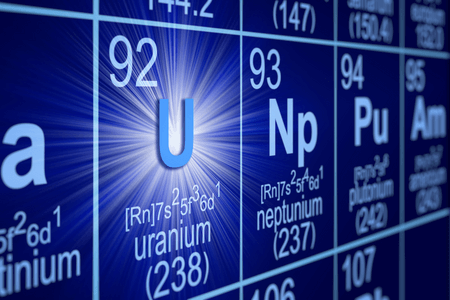
Common toxic heavy metals in our day-to-day lives
Heavy metals are elements that can be toxic to humans, animals, and the environment. Some are toxic, even in low concentrations. Others aren’t inherently toxic, but they can become if you’re exposed to very high concentrations.
Toxic heavy metals include:
- Lead
- Arsenic
- Mercury
- Uranium
- Cadmium
- Aluminum
- Nickel
- Thallium
Other heavy metals that aren’t toxic in small quantities include:
- Iron
- Zinc
- Lithium
- Calcium
How are we exposed to toxic heavy metals?
Most people are exposed to heavy metals through their diet. Here are some foods with the highest chance of contamination.

1. Fish
While fish is a fantastic source of omega-3 fats, it can also be high in mercury. According to the FDA, the highest levels of heavy metals can be found in:
- Swordfish
- Tuna
- King mackerel
- Grouper
- Orange roughy
Seafood can also be contaminated with arsenic, though this isn’t as common as mercury.
2. Water
An investigation conducted by USA Today in 2016 found that over 2,000 water systems in the US have high levels of lead. Some water systems can also be high in mercury.
To minimize contamination, use a water filter that can remove these heavy metals.

3. Non-organic foods
You probably read a lot about the use of pesticides in non-organic foods. But some studies have found that’s not the only problem. Some non-organic products may also be contaminated with toxic heavy metals such as arsenic, lead, or chromium.
4. Baby food
Children are highly vulnerable to heavy metals. Their bodies and brains are still developing, so you need to pay special attention to their nutrition. Foods formulated specifically for children should be safe. Except they aren’t always as safe as you’d expect.
A study found that 95% of children’s food samples tested had high levels of lead and arsenic. The worst ones seemed to be rice puffs and cereals. To keep your children safe, it’s best to avoid these foods or choose organic when possible.
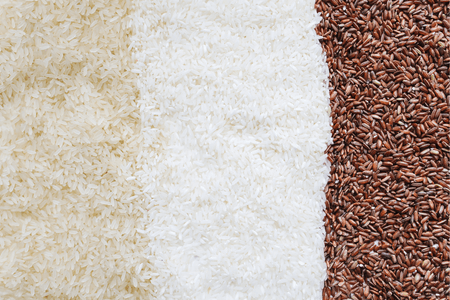
5. Rice
Rice is a staple food for almost half of the world’s population. Yet, studies have found arsenic in all types of rice.
Why does this happen? Arsenic ends up in the soil through various pesticides or other means. And unfortunately, it gets absorbed by the rice.
As with other foods, organic is safer. But with rice, even this might not be a guarantee. Arsenic spreads through the soil relatively easily. That means even organic rice might have slight contamination.
Washing and cooking can remove part of the arsenic. Unfortunately, it can also remove many of its nutrients. A study conducted in 2015 found a cooking technique that removed 85% of the arsenic in rice. It involved using a continuous stream of percolating hot water. While effective at reducing arsenic, this process also reduces potassium and phosphorus. You can find out more about rice and arsenic here.
Other means of exposure
Your diet isn’t the only way to be exposed to toxic heavy metals. Other means of exposure include:
- Living or working near a hazardous waste site
- Working with large quantities of pesticides or insecticides without proactive gear
- Smoking or inhaling cigarette smoke
- Working in an industrial setting
- Living or working in a place where paint with high levels of lead was used
- Using cosmetics that contain lead
- Working with X-ray machines or vacuum pumps
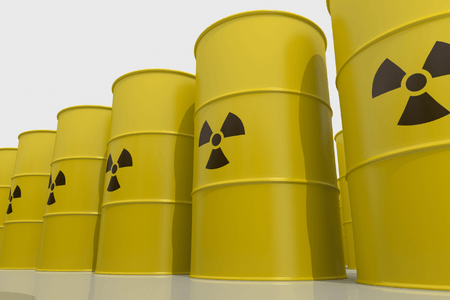
Heavy metal poisoning
Heavy metal poisoning happens when your body is exposed to too much of a certain metal. The most common culprits include:
- Mercury
- Lead
- Arsenic
- Cadmium
That’s because they are present in many foods and water, so it is easier to be exposed to them.
Symptoms and signs
The symptoms of heavy metal poisoning may differ slightly from person to person and from metal to metal. General symptoms include:
- Diarrhea
- Vomiting
- Abdominal pain
- Chills
- Weakness
- Shortness of breath
Lead poisoning may also come with:
- Sleep issues
- Loss of appetite
- High blood pressure
- Memory loss
- Irritability
- Constipation
If you’re dealing with mercury poisoning, your symptoms might include:
- Muscle weakness
- Nerve damage, especially in your hands and face
- Lack of coordination and trouble walking
Cadmium poisoning may include, on top of some of the general symptoms, fever and muscle pain.
Finally, someone with arsenic poisoning might experience muscle pain or skin lesions.
Prolonged exposure to toxic heavy metals can also lead to kidney and liver damage and increase your risk of cancer.
We also need to mention acute heavy metal poisoning. This happens when you’re exposed to a considerable quantity of a particular metal. It is a very serious condition that can start with confusion, nausea, arrhythmia, and can lead to falling into a coma. If you are pregnant, there is a high risk of miscarriage.
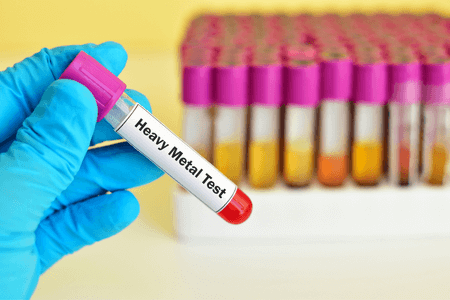
Testing
As you may have noticed, the symptoms of heavy metal poisoning can be easily confused with other health issues. Especially when the problem first starts presenting itself, you probably won’t experience every symptom on the list at once. So your heavy metal poisoning could be wrongly diagnosed as food poisoning if the proper tests aren’t conducted.
Testing, however, is straightforward. It requires a simple blood test that includes the heavy metals panel. You may also hear people call it the heavy metal toxicity test.
Sometimes, all your symptoms may point to heavy metal poisoning, but the levels in your blood will be low. In this case, other tests can be performed, such as:
- Hair analysis
- Kidney and liver function tests
- Urine analysis
- Fingernail analysis
- X-rays
- Electrocardiogram
What to do when you have high levels of toxic heavy metals?
The treatment depends on the severity of your symptoms and the results of the tests. For mild symptoms with low levels of heavy metals detected in your blood, following a heavy metal detox diet can be enough.
More severe cases will require medical attention. The treatments can include:
- Chelation. For this type of therapy, you’ll take medications known as chelating agents. These favor the elimination of heavy metals from your body through urine.
- Gastric lavage. This therapy is recommended within 4-6 hours of ingesting the heavy metals. If it has been longer than that and your symptoms are severe.
If you have kidney failure, you may also need hemodialysis.
Finally, your doctor may give various medications to treat your symptoms.
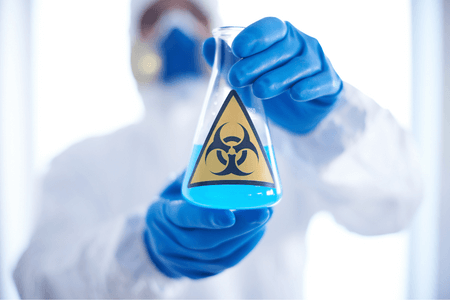
How do you prevent heavy metal poisoning?
Knowing that treatments exist is great. But prevention is always better. There are a few measures you can take to reduce your exposure.
If you know food is your primary source of toxic heavy metals, try choosing organic or limiting those foods. Eating some mercury-contaminated fish 2-3 times per month won’t be harmful to most people. But if you eat it daily, your risk of heavy metal poisoning increases.
If you’re exposed to heavy metals through your work, wearing the correct protective gear can save your life.
Don’t forget about your home. Just because you aren’t directly working with substances containing heavy metals, doesn’t mean you’re not in contact with them. Make sure the paints and materials you use don’t contain heavy metals.
Key takeaways
Heavy metals are elements that, in certain quantities, can become toxic in your body. Not all of them are immediately toxic—some, like iron, zinc, or copper are beneficial. Lead, mercury, arsenic, and cadmium, are some of the most toxic ones found in the environment.
Heavy metal poisoning happens when your body absorbs too much of one or more of these metals. This can be a quick process, being exposed to a very large amount of heavy metals in a short period. Here, you can immediate, severe poisoning symptoms.
But it can also happen gradually if you’re exposed to heavy metals every day for an extended period.
Thankfully, there are treatments that can help. Mild cases can benefit from a heavy metal detox, while severe cases will require medical attention.
What are your thoughts about toxic heavy metals? Did you know it’s so easy to be exposed to them? Do you feel your diet is safe? Join us on Facebook and let’s talk about it. And if you’re interested in a heavy metal detox, check out our next article here!
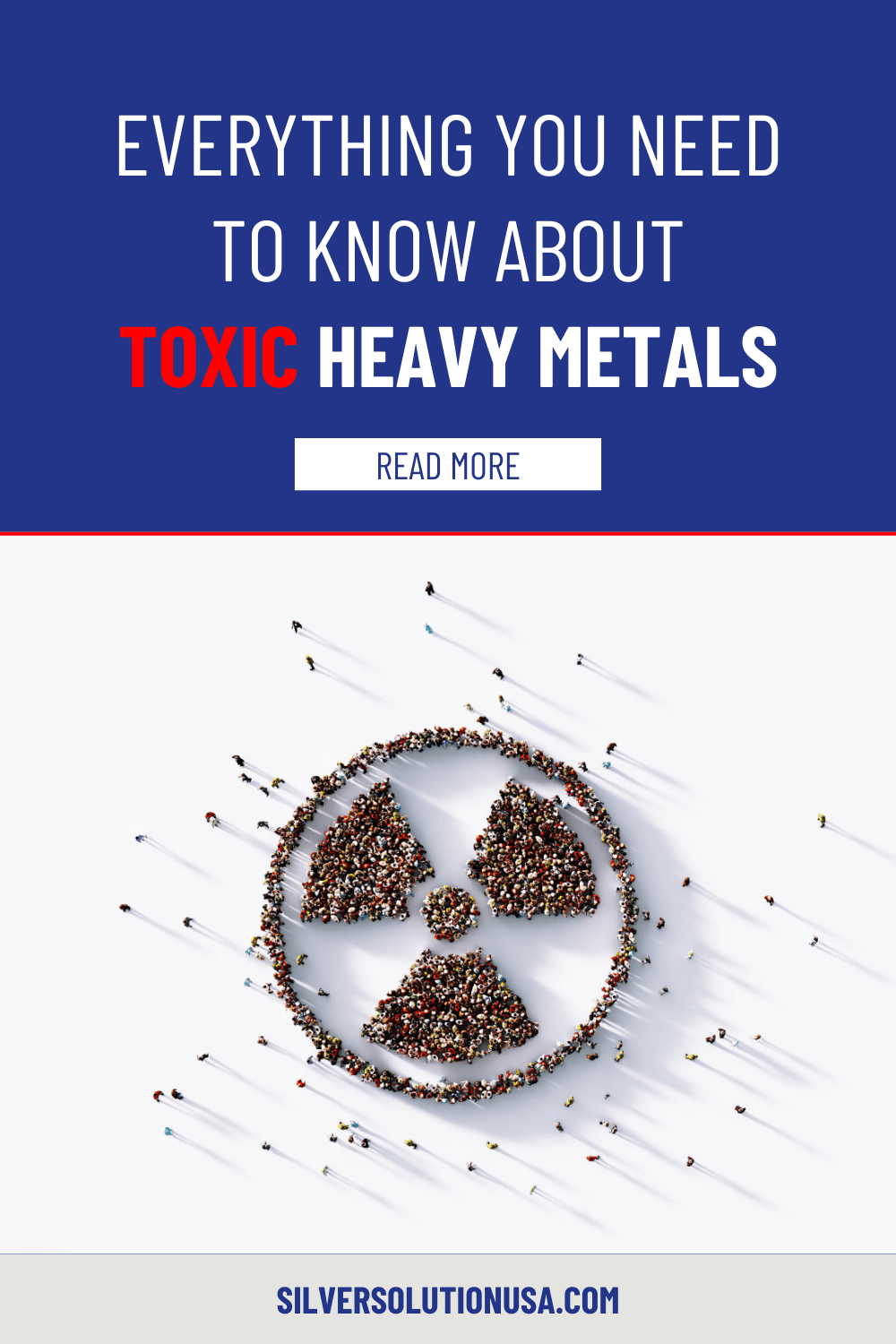
Health/Medical Disclaimer
This blog post does not provide health or medical advice. This blog post is for informational and educational purposes only and is not a substitute for professional health or medical advice. Before taking any actions based upon such information, we encourage you to consult with the appropriate medical and healthcare professionals. We do not provide any kind of health or medical advice. The use or reliance of any information contained on this blog is solely at your own risk.
Sources
https://pubmed.ncbi.nlm.nih.gov/22505948/
https://www.fda.gov/food/metals-and-your-food/mercury-levels-commercial-fish-and-shellfish-1990-2012
https://eu.usatoday.com/story/news/2016/03/11/nearly-2000-water-systems-fail-lead-tests/81220466/
https://www.sciencedirect.com/science/article/pii/S221475001730149X
https://journals.plos.org/plosone/article?id=10.1371/journal.pone.0131608
Recent Posts
-
Are sunscreen ingredients harmful?
Sunny days can bring a lot of fun. Going out for a swim, spending time in nature, or relaxing on the …18th Mar 2024 -
The Veggie Debate: Does Cooking Vegetables Destroy Nutrients and the Best Ways to Cook Them
Vegetables are one of the healthiest foods you can choose. Some people downright hate them, while so …4th Mar 2024 -
Best Foods for COVID Recovery and Prevention
A few years ago, a new virus took the world by surprise. COVID-19 may look like the flu on the surfa …19th Feb 2024




